| 1 | A non-venomous Spanish snake |
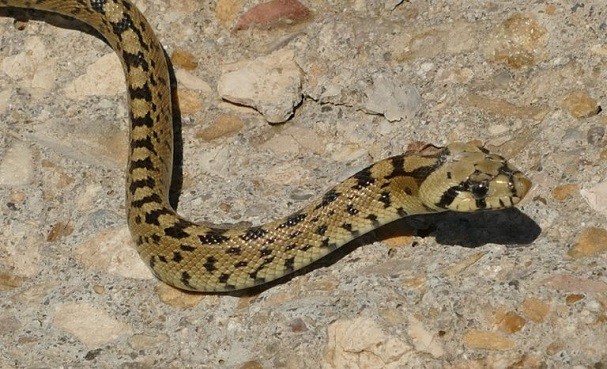
As of 2019, Spain was the world’s most popular tourist destination. According to brochures, it’s a country of sparkling beaches, 33C temperatures and pristine white villages, yet one thing the glossy advertisements don’t mention is the ladder snake, AKA Zamenis scalaris, a snake which rules the entire country.
This is a non-venomous species with round pupils, which averages at 100cm, with an all-time record of 165cm. Ladder snakes are unable to kill a human being, yet are surprisingly vicious, and will even attack innocent people for no obvious reason.
Unlike the horseshoe whipsnake, which regularly strays into towns and cities, the ladder snake is purely a countryside species. They like areas with plenty of shade and vegetation, particularly holm oak forests and pine forests. Their manmade habitats include hedgerows, dirt roads, crumbling stone walls, and old ruins with vegetation breaking through them.
Ladder snakes inhabit virtually the whole of Spain and Portugal. They also have sizeable enclaves in northwest Italy and extreme southern France. In Portugal, ladder snakes are commonly found basking on dirt roads, including ones walked down by tourists on their way to the beach (watch out). Compared to other Spanish snakes, they’re particularly notorious for occupying citrus fields and olive groves.
| 2 | Ladder pattern facts |
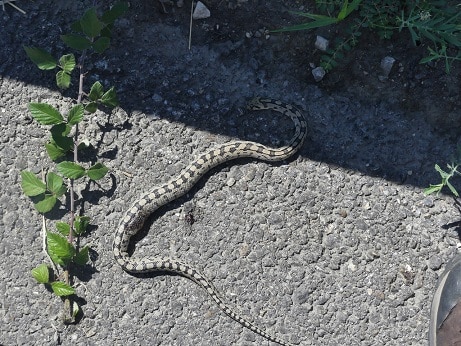
The ladder snake’s name comes from their patterns as juveniles, which are far more spectacular than as adults. The “ladders” are located down their spine, with even squares of bright yellow alternating with squares of pitch black. As they reach adulthood, these patterns fade, until all that remains are the two black lines making up the ladder’s original border.
Ladder snakes have round black pupils rather than vertical. Their scales are sleek and shiny, and their snouts long and narrow. This species has a relatively bulky body, which adds to the impression of size even if they measure just 100cm.
Ladder snakes are olive-coloured as adults, with brown eyes and a black tongue. Unlike the adder, they barely vary in appearance across their European range. There’s only one exception – the French Galapagos islands. The ladder snakes here are far longer, reaching 1.6 metres regularly, for reasons that nobody knows. A lack of native predators is one possible reason. Island gigantism happens all over the world, with a classic example being the Galapagos giant tortoise (not to mention King Kong).
| 3 | Picked off by predators |
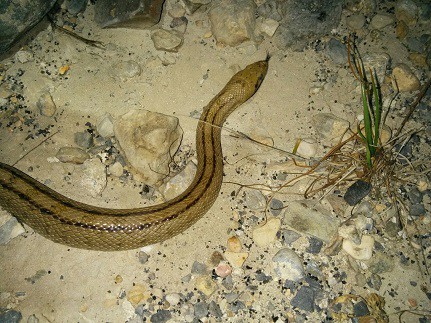
Picking up a ladder snake isn’t recommended. They’re not only vicious, but extremely difficult to predict. Their defensive skills are endless, including biting, thrashing, twisting, releasing a foul snake small, and wrestling violently. Fortunately, they give plenty of warning, starting with a bluff lunge forward while hissing loudly, and gaping their mouth wide open.
Young ladder snakes, meanwhile, are much more timid. The rule is that if the ladder markings remain, they’ll probably flee instead, usually into a bush or underground rabbit hole. Ladder snakes are targeted by numerous predators, as one study found that 14.9% of males had incomplete tails, having barely escaped with their lives.
Montpellier snakes are one enemy, but their main predators are birds, including the common buzzard (0.7% of their calories in one study), black kite (0.6%), red kite (0.3%), and Spanish imperial eagle (0.6%). Thick hedgerows give the ladder snake a nice shield, but on the old stone walls or dirt roads they gravitate towards, they’re completely exposed. Ladder snakes aren’t the fastest species either.
| 4 | Nemesis: short-toed eagle |
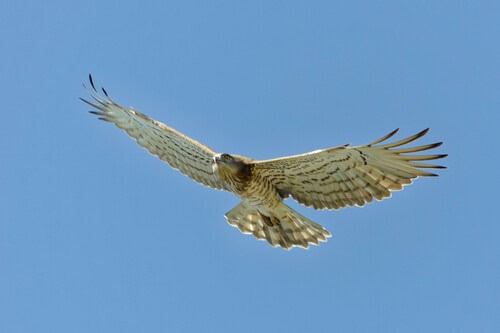
There’s one razor-taloned bird that really sends shivers down the ladder snake’s spine, and that’s the short-toed eagle. This snake specialist lives all over Europe, but particularly Spain, and has a wingspan of 180cm.
The same study above found that ladder snakes made up 39.5% of the short-toed eagle’s calories, vastly outstripping other birds. In a study from wooded areas of northern Portugal, ladder snakes made up 28% of its total calories. This was second to the Montpellier snake at 42.2%, but the latter moves by day, while ladder snakes are nocturnal, harder for a bird to spot. The scientists concluded that in proportion to its availability, the ladder snake was easily the short-toed eagle’s favourite meal. There were some species that they avoided entirely, including the Riccioli’s snake and false smooth snake. Overall, snakes made up 92.5% of the short-toed eagle’s diet.
The ladder snake has a nemesis in the wild which is actively trying to find it. An American equivalent is the gopher snake and its red-tailed hawk foe.
| 5 | An invasive species on Ibiza |
Ibiza’s disgruntled locals often complain that the peaceful atmosphere of the island has been ruined since it became a global party hub. But it’s not just drunken British tourists that have invaded – ladder snakes have landed on masse too. The first invasive ladder snake was spotted on Ibiza in 2003, nearby Mallorca in 2004, and Formentera in 2006.
Olive trees are widely blamed, as Ibiza now has a booming ornamental olive industry, where single olive trees are planted in the gardens of locals for decoration. These are uprooted from the vast commercial groves of Spain, but often without inspecting the trunks first for ladder snakes lodged in them. From sleeping peacefully in a hollow, these ladder snakes find themselves transported hundreds of miles across the ocean, before slithering out onto a whole new island.
On Ibiza itself, the horseshoe whipsnake is a bigger threat, but the ladder snake now occupies 75% of Formentera. Unlike the horseshoe whipsnake, which is devastating local lizards, the ladder snake isn’t causing much harm, but locals are still instructed to club them to death on sight. This is easy to accomplish, as Ibiza has no native snake species.
| 6 | Larger than average eggs |
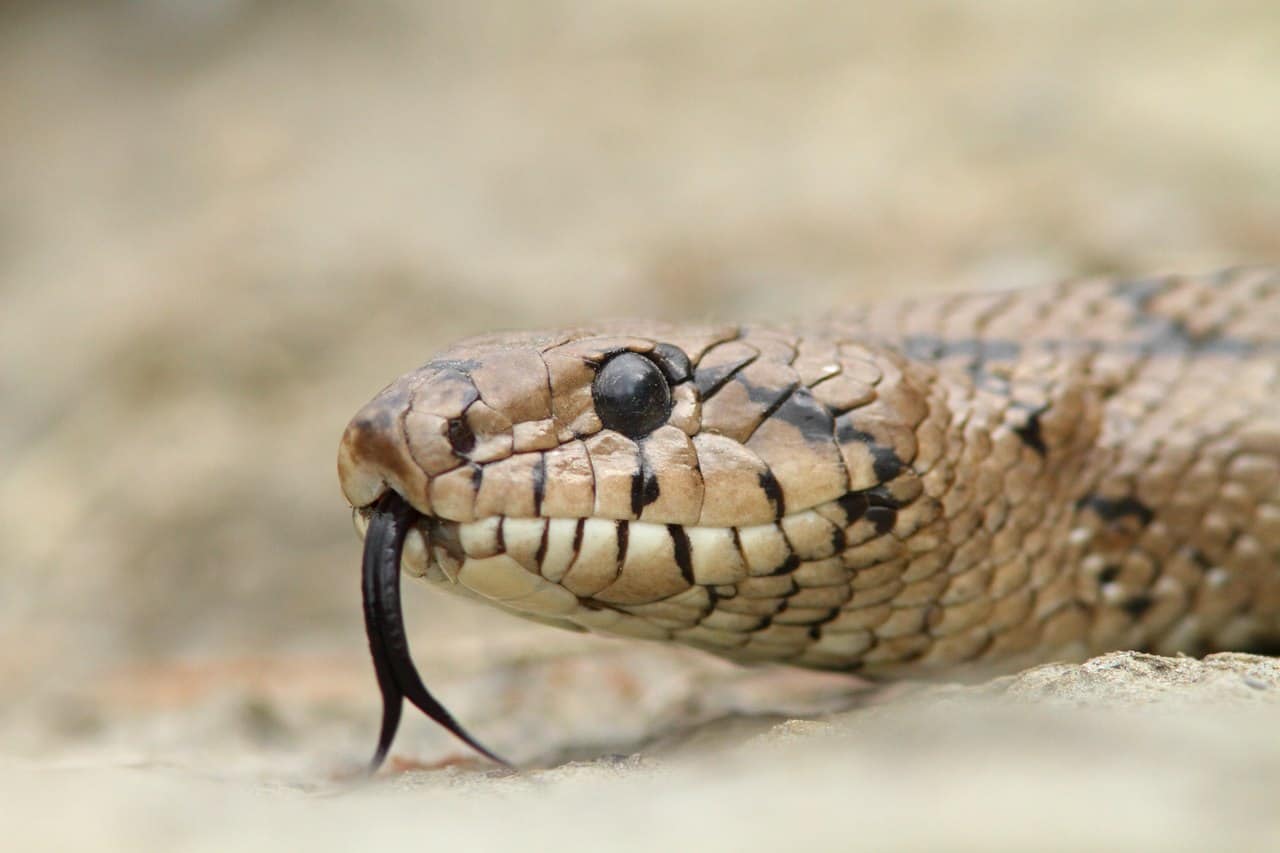
Instead of laying dozens of smaller eggs, mother ladder snakes lay a small amount (usually 6-15) of much larger eggs. These eggs are yellowish, and usually stick together slightly. Mothers usually lay them in rabbit burrows or under rocks, but in areas of loose soils, they sometimes dig their own holes.
Ladder snakes are more maternal than most, as mothers defend their eggs viciously for the full 60 days pre-hatching, and a few more afterwards. From the first crack appearing, it takes the ladder snake 24 hours to break free and finally slither away. Hatchlings are particularly sturdy, as they’re born with enough fat reserves to survive an entire winter without eating.
These newborns measure 25cm on average, versus an adult length of 100cm. After laying eggs, mother ladder snakes can sometimes lose 30% of their body weight, the eggs are so large. Another study found a 46.4% reduced body weight after laying 10 eggs.
| 7 | Diet: almost entirely mammals |
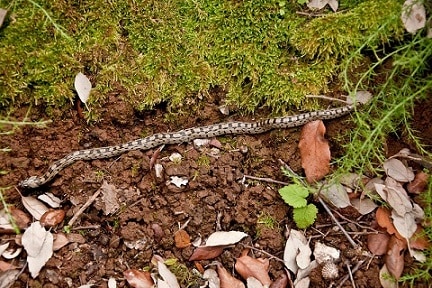
The ladder snake has one record to its name: being the top mammal eater of all Mediterranean snakes. It eats lizards very occasionally, and sometimes climbs trees to snatch bird eggs from their nests, but one study found that mammals made up 87.2% of the ladder snake’s diet by headcount, and 93.9% by weight. Birds reached 11.7% by headcount and 5.5% by weight.
Ladder snakes also eat very small prey relative to their body size. Rather than forcing down a rabbit and almost exploding, it’s all about small scurrying voles with this snake, a more cautious approach.
Ladder snakes are constrictors, and always seize the mammal with their jaws, before applying one or two rings of its body. It takes 5 minutes on average for a ladder snake to constrict its prey. Then they behave like the average snake and lie around immobile for a few days to digest. The ladder snake swallows 80% of its prey headfirst (83.1% in one study).
| 8 | Invades underground vole burrows |
Ladder snakes are active foragers rather than ambushers which wait patiently for days. They’re also notorious for picking on sleeping or resting prey.
In southwestern Spain, their single most eaten species is the Mediterranean pine vole, making up 24.6% of their calories in one study. This vole mainly lives in pasture, and grassy meadows with plenty of clovers. It digs an intricate network of burrows just below the surface, and drags in vegetation to create a cosy den for its family, in one large chamber. Ladder snakes often seek out these chambers and swallow the entire sleeping vole family at once.
The ladder snake is nocturnal while the Mediterranean pine vole is diurnal, making night the perfect time to strike. Ladder snakes will also devour entire bird families while they sleep in nests. Nature is brutal.
When analysing their stomach contents, scientists have found that ladder snakes eat by far the least during spring. Birds they’re confirmed to swallow include blue tits, European bee eaters, European rollers, and sand martins.
| 9 | Fossils are everywhere |
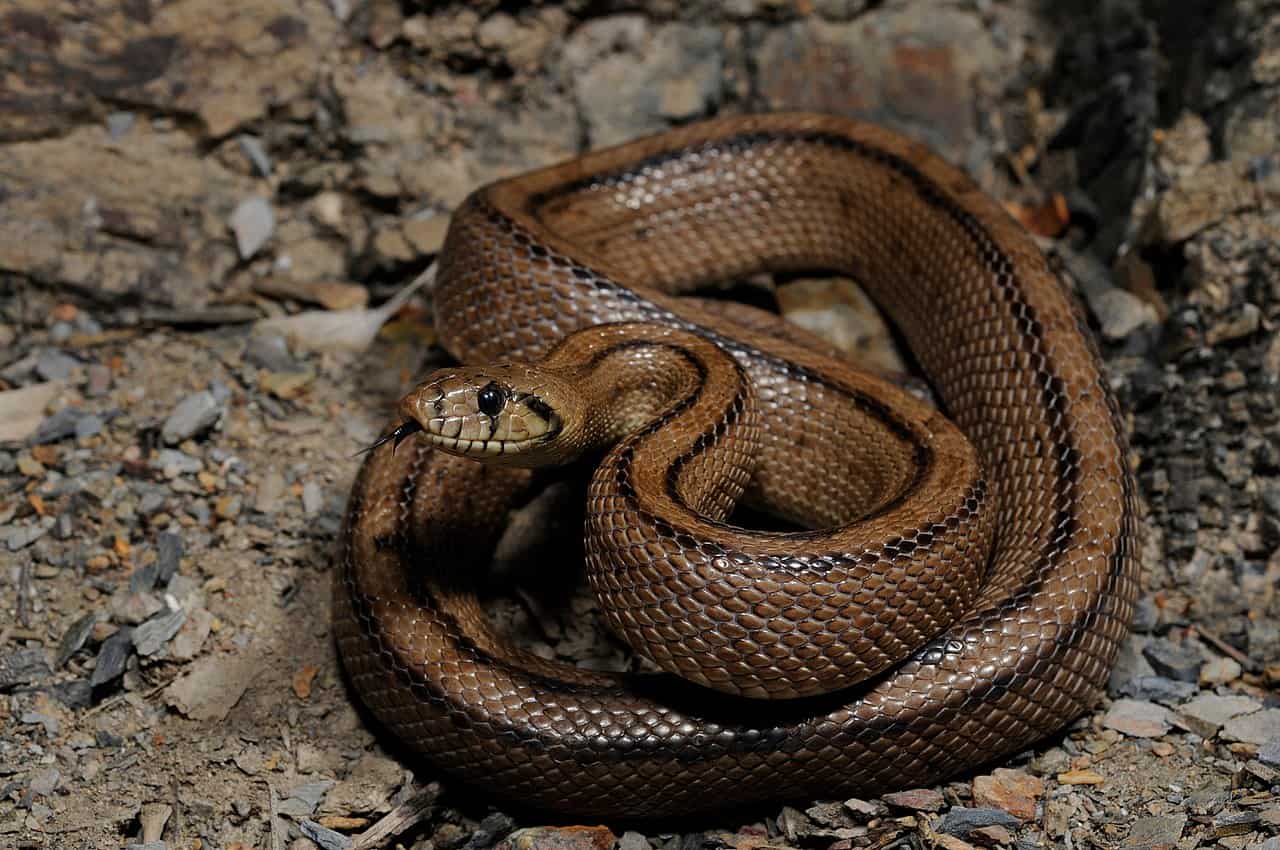
Archaeologists have too much to choose from with the ladder snake. Its fossils are abundant all over Spain, from many different time periods.
For example, Cova Bonica is one of the richest archaeological sites in Barcelona. Necklaces of red coral have been unearthed there, alongside the ritualistically buried bodies of children dating back 7400 years. However, the cave has also revealed ancient ladder snake fossils dating back to the Pliocene, between 3.4 and 2.1 million years ago.
More recent fossils have dated to between 128,000 and 40,000 years ago, in Cova del Gegant in Catalonia, a seaside cave with a wide, semi-flooded entrance. A weirder one is Castillejo del Bonete in Spain. This cave is packed with human remains, including pottery and ancient necklaces. It was a religious cave devoted to the worship of the sun god, with several burial chambers connected to each other via narrow passages. There’s also animal remains such as badgers, deer, and rabbits, with burn marks possibly from cooking. In summer 2021, archaeologists unearthed the skeletons of many snakes, including the Montpellier snake and ladder snake.
| 10 | Roams Spain at random |
Some snakes have a small home territory, even a constant den they retreat to at night. The ladder snake has a different mindset – it moves around the Spanish countryside at random, and at high distances of up to 100 metres per day.
The downside is that they often end up as roadkill, particularly on dry Portuguese dirt tracks. They even end up as trainkill, being struck at 150mph after crossing the line too slowly. Despite this, ladder snakes are abundant in Spain, with a healthy tag of “least concern” from IUCN.
Another arch enemy of the ladder snake is the Egyptian mongoose, an invasive species from Africa. They were introduced by the Romans 2000 years ago, but have particularly accelerated their conquest over the last few decades. Mongooses are immune to snake venom (as seen in many cobra battle youtube videos), and a Portuguese study found that the more invasive mongooses live in an area, the less common ladder snakes become.
Therefore, the ladder snake isn’t completely safe in the years to come. Fortunately, the Egyptian mongoose has a local enemy of its own – the Iberian lynx.
